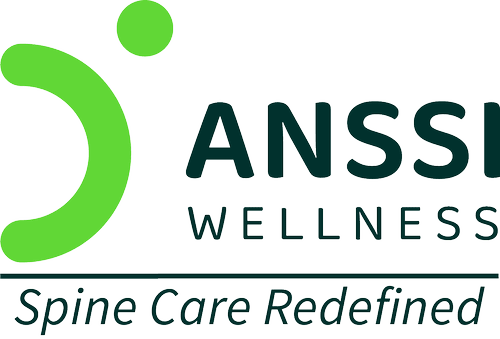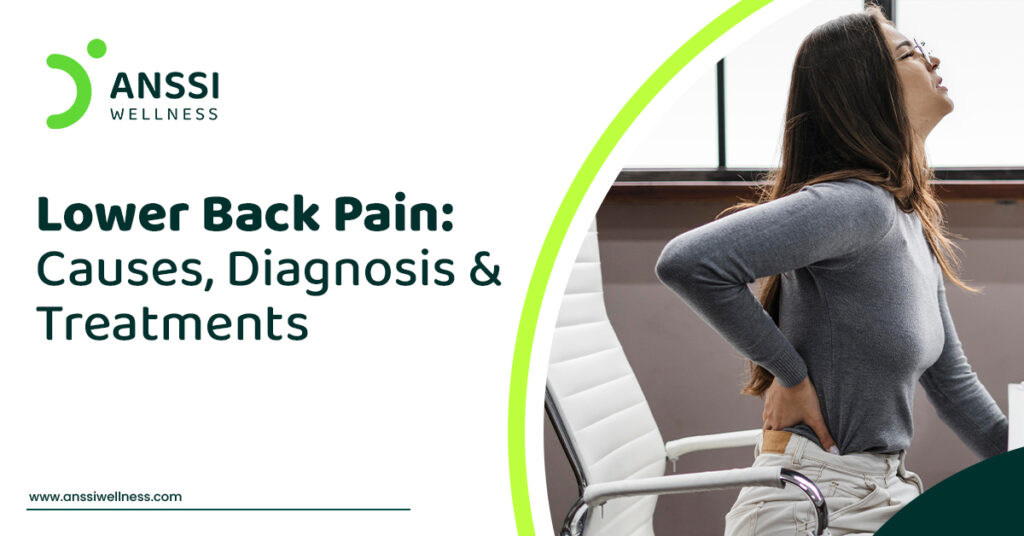As the name suggests, lower back pain is basically pain experienced in the lower back region of the body. The pain can vary from mild to severe and in some instances, can make it challenging to perform day-to-day activities.
Lower back pain is a common issue experienced by a large number of people worldwide and is caused by a variety of conditions. Let’s understand the different lower back pain causes, its diagnosis, and the various lower back pain treatments that you can opt for.
How Common is Lower Back Pain?
Research studies have shown that 4 out of 5 individuals experience lower back pain at some stage in their lifetime. Lower back pain is among the most common reasons people visit a doctor or take a leave from work.
Who Experiences Lower Back Pain?
Lower back pain is generally experienced by people suffering from an issue with one or multiple parts of the lower back, including:
- Muscles and ligaments (tendons)
- Intervertebral discs
- Vertebrae
- Nerves
- Problem in a nearby organ, like the kidneys
Common Causes of Lower Back Pain
Lower back pain can be the result of a variety of injuries, conditions, and diseases. The following are the common causes:
Strain
Strain in muscles causes stiffness and soreness and generally leads to lower back pain. It normally happens due to sudden awkward movements or lifting heavy objects in the wrong manner.
However, it can sometimes occur due to overexertion. In some rare cases, strain can also be caused by twisting of the back or while bending over to fetch something.
Structural Problems
If you are experiencing severe back pain, then it could be due to structural problems caused by conditions like scoliosis or spinal stenosis. Scoliosis is a spinal deformity and can cause stiffness in the back, difficulty in movement, and pain. In contrast, spinal stenosis occurs when the spinal column is too narrow for the spinal cord.
Arthritis
Spinal osteoarthritis is a major spine condition and causes severe back pain as it progresses. It’s usually a result of damage and wear and tear in the cartilage of joints in the lower back region. If left untreated, it can cause narrowing of the spinal canal, leading to spinal stenosis.
Osteoporosis
Osteoporosis is essentially the loss of bone density and thinning that can cause mild to severe lower back pain. It can result in tiny fractures in the vertebrae, culminating in immense pain. Individuals with osteoporosis are at a higher risk of fractures after suffering an accident such as a fall or vehicle crash.
Symptoms of Lower Back Pain
Common symptoms of lower back pain comprise of:
- Posture Issues: Having a slouched or bent posture instead of a straight one is a very common symptom of lower back pain. The lower back may seem flat as opposed to curved.
- Stiffness: Stiffness of the lower back may make it difficult for you to move or straighten the back. You may take a lot of time to get up from a seated position and typically experience a reduced range of motion.
- Muscle Spasms: If you have had a lower back strain, then your lower back muscles may spasm or contract out of control, leading to significant pain. You may find it impossible to move, stand or walk.
Lower Back Pain Treatment
Mild lower back pain generally goes away with adequate rest, basic exercises, ice therapy, and common painkillers. However, if the pain persists for a long period of time and increases in severity, then visiting a doctor or spine specialist is recommended.
The various lower back pain treatment options available are:
- Medications
- Physical therapy
- Injections
- Surgery
- Non-Surgical Spinal Decompression Treatment
Lower Back Pain Home Remedies
Certain home remedies can be effective in treating mild lower back pain. This includes:
- Heat and Ice Therapy: Using ice packs on the lower back area can help alleviate pain and reduce inflammation. On the other hand, warm compresses should be avoided in case of inflammation and instead used for conditions like arthritis.
- Exercises: Performing basic exercises for enhancing posture and bolstering the back and abdominal muscles can help decrease lower back pain. You can also focus on strengthening the core muscles to increase flexibility.
Non-Surgical Spinal Decompression Treatment
The most affordable, effective, and proven treatment for disc-related lower back pain is the Non-Surgical Spinal Decompression Treatment. Based on the American Spinal Decompression Technology, this world-class treatment involves no medications, injections, hospitalisation, side effects, or surgery.
The spinal decompression treatment gently stretches and releases the spine using repetitive, mechanical movements. As a result, a negative pressure change is formed within the spinal joints, enabling the nutrients to be pulled back into the spinal discs. This culminates in a physiological change that reduces pain levels and facilitates the natural healing process of the human body.
About ANSSI:
ANSSI Wellness focuses on improving the quality of life for patients suffering from spinal issues, aiming to provide relief where other conventional treatments have failed. Through advanced non-surgical spinal decompression treatment, ANSSI is committed to helping patients avoid surgery and recover in a safe, effective, and compassionate environment.
Connect with ANSSI Wellness on LinkedIn, Instagram, and Facebook for expert guidance.
Reference:
Gionis, Thomas A., and Eric Groteke. “Spinal decompression.” Orthopedic technology review 5 (2003): 36-39. https://comfortrac.net/wp-content/uploads/2015/11/Spinal_Decompression.pdf
Daniel, Dwain M. “Non-surgical spinal decompression therapy: does the scientific literature support efficacy claims made in the advertising media?.” Chiropractic & Osteopathy 15.1 (2007): 1-5. https://chiromt.biomedcentral.com/articles/10.1186/1746-1340-15-7



